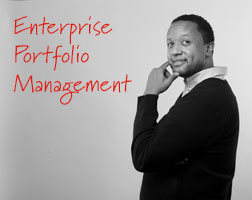Eugene Wolf Director of Logicalis SMC explains how Enterprise Portfolio Management (EPM) can hold the key to delivering a holistic view of fragmented corporate information, to underpin better strategic investment planning and help to manage costs.
In common with most executives, it’s likely you have spent the last few years looking for ways to lower costs, without impacting on performance. And of course, striking that balance is the reason why a 10% cut across the board is rarely a good idea – yes, you hit the numbers in terms of spend, but the potential damage well and truly outweighs the gains.
The sweet spot, the Holy Grail even, is in finding a way to deliver those essential savings while actually enhancing overall performance – and that is about taking a more strategic view. Namely, coordinating all the organisation’s portfolios, to enable sound, strategic investment planning.
Thankfully, finding this particular Holy Grail is hardly the stuff of the Da Vinci Code. The answer lies in Enterprise Portfolio Management (EPM).
EPM is the ongoing, dynamic, and flexible use of information about the business to make better decisions. In essence it combines selected subsets of information from existing management systems, organises it into intuitive portfolios, and establishes the relationships between the portfolios - to present all this information within the context of the enterprise’s business and IT needs. And, crucially, it provides tools for the dynamic and interactive analysis of that information to unlock greater business value.
Given the potential gains, it’s worth looking at that in a little more detail. First of all, your company has both business and IT portfolios, for example:
Business Portfolios
- Business Goals and Strategies: The "why" behind all the decisions an organisation makes, also known as the "Business Context". It is made up of all the external business drivers, requirements, strategies, principles and goals that drive business decisions.
- Business Architecture: This describes how an organisation executes its strategy to meet its goals. It covers business processes, products and services, and the capabilities and organisational structure through which a business executes its strategy.
IT Portfolios
- Applications: This is the software used by employees, customers and partners to interact with corporate data and to conduct transactions. This portfolio also includes any development plans associated with each application.
- Investments: Investments are translated into programmes and projects proposed or financed by the organisation. This information is used in making decisions about spending and changes to current IT and business operations.
- Technology: The organisation's "hard" or "physical" IT assets as well as its catalogue of technology standards, the status of each standard (whether it has been approved or denied), and the future roadmap for each standard.
- Information: This is all of the information assets that the enterprise uses in its operations, varying from financial figures and intellectual property, to data on customers, products, services, contracts and employees. Proactively understanding and managing these assets is critical to planning. It is also essential to understanding how this information relates to other portfolios, especially the Business and Applications portfolios.
Corporate objective
So the goal of EPM is to combine all business portfolios together with IT portfolios in order to make them contribute to the corporate objectives, mission and vision.
Sounds logical doesn’t it? Yet, in practice it often goes wrong.
Quite simply, that is because cooperation between departments is often far from ideal and there is a lack of focus on corporate goals. For example, the business invests in applications based on old technology, while IT wants to phase out these applications and aims at an All Cloud policy. Or IT is investing in programmes that do not contribute to the objectives and strategy of the business.
Climbing this particular mountain often looks impossible when viewed from sea level – because doing so involves gaining a clear understanding of all your internal portfolios and the relationships between them, including the overlapping processes such as Business IT Planning, IT Change Management and IT Financial Management.
The fact that all the information is, more often than not, scattered over the organisation or locked up in silos is the reason all too few even get as far as the foothills.
Set information free
However, with good Enterprise Portfolio Management (EPM) in place you can set this information free, clearing the way for decision-makers to analyse it and enabling you to make the right choices for your organisation. By truly leveraging all information about the portfolios, EPM enables both business and IT managers to make ‘what-if’ analyses.
If the CEO, for example, can quickly see which markets the business is expanding in, he or she can better decide which applications to upgrade and which to divest in order to deliver new business capabilities.
If on the other hand, the CIO can quickly understand the investment portfolio, he or she can understand which applications are in the process of being modernised or retired by business units and thus avoid wasteful redundant efforts.
The end result? Not only do you have the power to deliver that 10% saving, you also have the ability to do so with greater efficiency and, in future, better decisions and investment planning based on real insight, will deliver value where it really matters – in driving the business forward.
There’s that Holy Grail again.
Why not take a look at the Logicalis SMC Enterprise Portfolio Management (EPM) resources?

